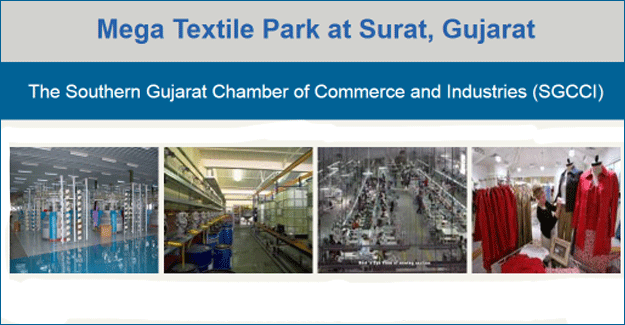Surat Textile Park Aims At High Investment To Boost India’s Synthetic Fabric Exports
Surat Textile Park Aims At High Investment To Boost India’s Synthetic Fabric Exports

The South Gujarat Chamber of Commerce and Industry is currently planning to increase the export quantum of synthetic fabrics and garments from the country. Compared to export of cotton fabrics and garments, the export trend for synthetic fabrics and garments is quite less. The South Gujarat Chamber of Commerce and Industry plans to achieve this turnaround with the setting up of a textile park in Surat that will invite investments to the tune of Rs. 10,000 crore (US$ 15.48 billion )over the coming years.
According to B.S. Agarwal, President of South Gujarat Chamber of Commerce and Industry, “The proposed Rs.1800 crore textile park envisaged in Surat will focus on establishment of weaving, textile processingand garmenting units. It will encompass all the infrastructure facilities required for establishing processing units like CETP, water recycling plant, centre of excellence, availability of water, sewage treatment plant, power plant and solar plant among other amenities. This park will facilitate establishment of Mega Processing Units which will be technologically advanced ones having economies of scale.”
“The reason why the export of synthetic fabrics and garments is low is because of lack of such processing units which can cater to the huge demand of fabrics, having a uniform quality. With the setting up of this park we plan to significantly increase the volume of exports of synthetic fabrics and garments,” he elaborated.
According to Agarwal, investors have so far shown a keen interest in becoming a part of the project. There is interest evinced both locally, from neighbouring localities, different parts of India and also globally. Elaborating on this he said, “The processing units which are in the city area as well as those in Pandesara, Palsana, Kadodara & Sachin areas have also shown keen interest in establishing their units in the proposed textile park. A number of units who have expansion plans will also establish their units. People from Mumbai, Rajasthan, Delhi and China have shown their interest in establishment of their units.”
When queried about the local capacities to expand and their ability to set up effluent treatment plants in accordance with their expansion profile, Agarwal said, “At the moment, effluent treatment facility in almost all industrial areas are packed to their capacity and there is no scope for expansion or establishing new units. This park will provide an opportunity to all of them. This is so, because there will be a huge capacity set up for the effluent treatment plant. The capacity of the plant will be compounded by a sound system for recycling and disposal of waste.”.
Citing other advantages of the proposed park, Agarwal said, “This place is very well connected with the highways and railways. This will ensure that it saves transportation cost to a great extent. Secondly, it will afford an opportunity for industrial suppliers and consumers to work at close quarters thereby reducing the requirement for inventory levels and cost of doing business.”
It may be recalled that the plan was originally envisaged during the Vibrant Gujarat summit. The South Gujarat Chamber of Commerce and Industry (SGCCI) had at that point of time signed a memorandum of understanding (MoU) with the Gujarat government for the facilitation and development of mega textile park at Pinjrat. The plan envisaged the use of 70 lakh square meters of land at the said spot.
Agarwal described the mega textile park as a dream project that will permanently alter the face of Surat’s textile sector.
The presentation made to the government of Gujarat was prepared by Infrastructure Leasing and Finance Corporation (IL&FS). The government had sounded a positive note after hearing the pitch of the presentation way back in January 20117.
Quoting figures and statistics on board, Agarwal said, “The park will accommodate around 100 textile processing units, 40 water jet weaving units, around 225 garmenting units and other textile ancilliary units.” With this attractive infrastructure in place the SGCCI expects a whopping Rs.10,000 crore investment from both Indian and global players.”
Dwelling on details, the SGCCI spokesman said, “The mega textile park will house giant textile processing units. Each of these units will have an average capacity of manufacturing over 3 lakh meters of fabric in a day. Around 50 per cent of the fabric manufactured in the processing units will be converted into home textiles and garments. The rest of the fabric will be sold outside the state.”



 textileexcellence
textileexcellence 







